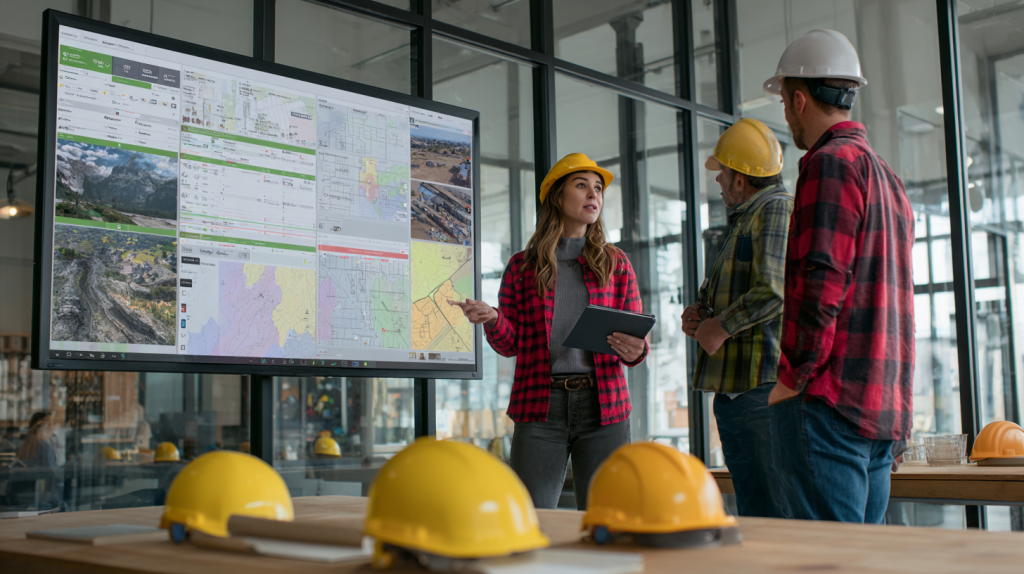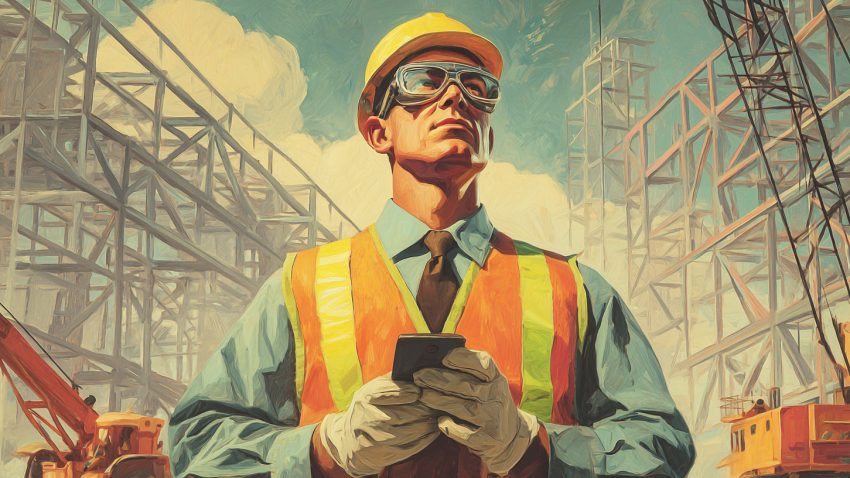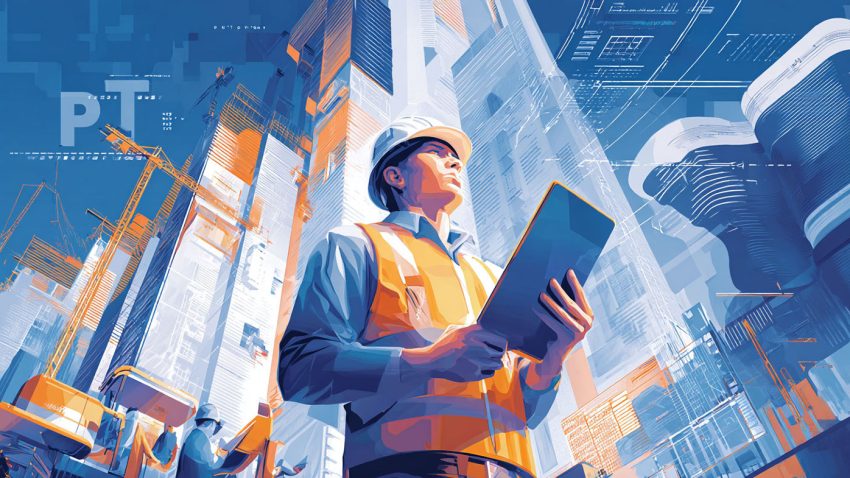How AI and Automation Are Shaping the Future of Mission-Critical Data Center Construction
Table of Contents:
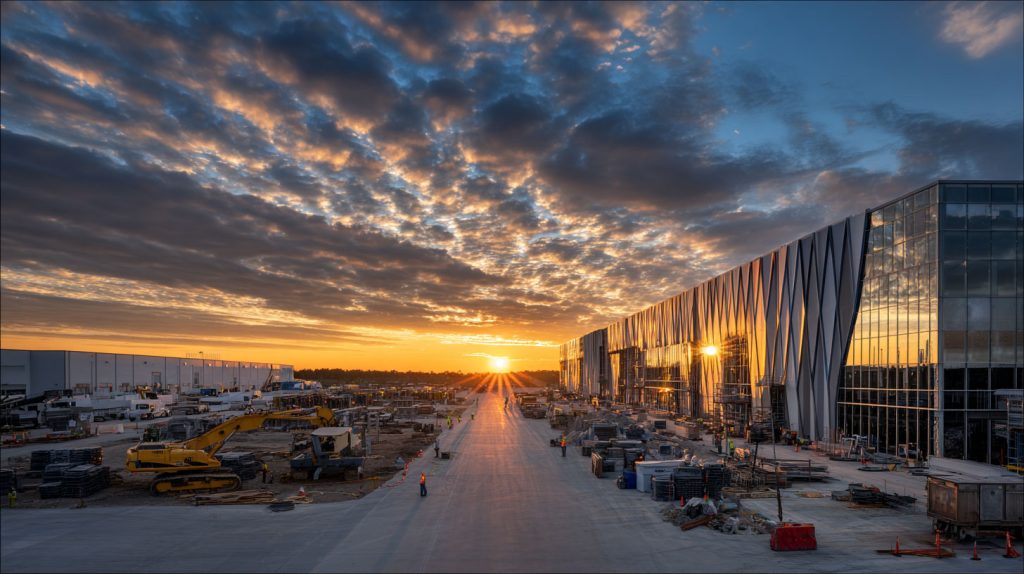
Why AI and Automation Matter in the Future of Mission-Critical Data Center Projects
The global demand for data is exploding, and with it comes a new generation of mission-critical data centers—massive, high-performance facilities designed to power AI workloads, cloud computing, and digital infrastructure 24/7. But as data centers grow in complexity and scale, so does the challenge of building them. Traditional methods—manual scheduling, paper-based quality checks, and siloed logistics—simply can’t keep up with the precision and speed hyperscale construction demands.
That’s where Artificial Intelligence (AI) and automation are stepping in. The same technologies that drive the operation of modern data centers are now transforming how these facilities are designed, constructed, and coordinated. From predictive scheduling and robotic installation to digital twins and automated inspections, AI and automation are redefining what’s possible in the field.
For superintendents and contractors, this transformation means smarter planning, faster problem-solving, and more predictable outcomes. AI can detect delays before they occur, analyze equipment performance in real time, and even optimize crew assignments automatically. Meanwhile, robotics and automated systems are performing repetitive, high-risk tasks—enhancing safety and consistency across the site.
In this article, we’ll explore how AI and automation are shaping the future of mission-critical data center construction. You’ll see how these technologies are revolutionizing scheduling, equipment installation, quality assurance, and field coordination—and how platforms like StruxHub are bridging the gap between digital intelligence and hands-on jobsite execution.
Why AI and Automation Are Revolutionizing Data Center Construction
AI and automation are redefining how construction teams plan and execute data center builds. These technologies bring predictive insights, real-time data, and precision automation to a process that once relied heavily on human intuition and manual updates.
AI analyzes vast datasets—from supplier timelines and labor availability to weather forecasts and previous project performance—to predict risks and optimize workflows. Automation takes it a step further by executing repetitive or hazardous tasks, such as conduit installation, material sorting, and inspection data capture. Together, they make jobsite operations faster, safer, and more efficient.
The integration of these tools also transforms collaboration. Field teams, engineers, and project managers all share live dashboards that track progress and performance across the jobsite. Issues can be identified and resolved before they escalate, reducing rework and costly downtime.
Top Benefits
- Predicts schedule delays and supply chain issues before they happen.
- Automates repetitive or hazardous field tasks to improve safety.
- Creates transparency and accountability across all project stakeholders.
Best Practices
- Combine AI scheduling tools with daily field reports for real-time forecasting.
- Integrate automation in repetitive or high-risk workflows.
- Train teams early to interpret AI insights and act quickly.
Q&A Mini Section
Q: How does AI improve project management for data centers?
A: It provides predictive insights that help managers identify bottlenecks and adjust resources proactively.
Q: Can automation really replace manual field tasks?
A: Not entirely—it complements the workforce by handling repetitive or precision-based activities faster and more safely.
Q: Why are AI and automation especially relevant for mission-critical builds?
A: Because these projects demand precision, speed, and uptime reliability that only data-driven planning can deliver.
AI and automation turn traditional construction workflows into agile, intelligent systems capable of handling the extreme demands of hyperscale builds.
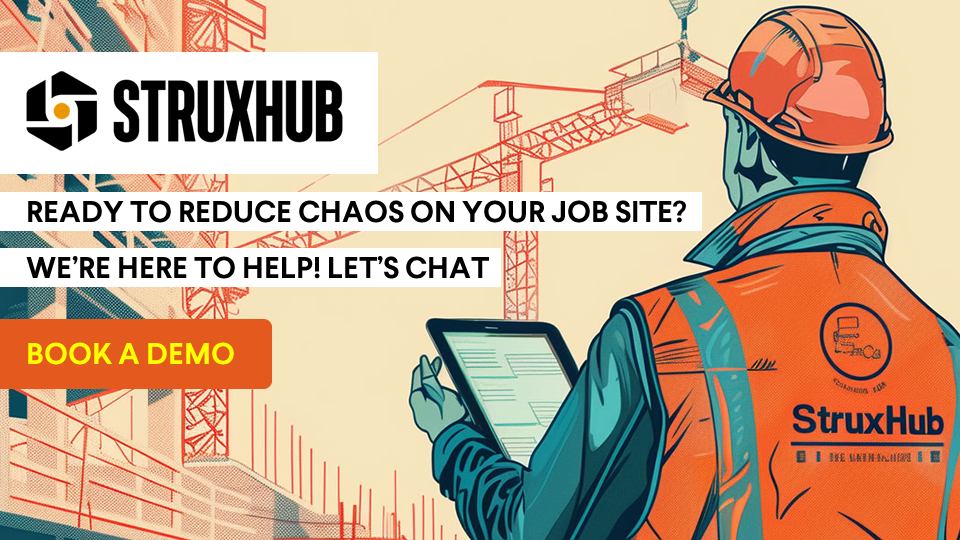
How AI Is Improving Construction Scheduling and Predictive Planning
For superintendents, scheduling is one of the toughest aspects of data center construction. One missed delivery or equipment delay can cascade across hundreds of dependencies. AI solves this by transforming static schedules into living, predictive systems.
By analyzing real-time project data—weather patterns, labor productivity, supplier performance—AI creates schedules that adjust automatically to changing conditions. Machine learning models can predict when tasks are likely to overrun, allowing superintendents to reallocate crews, shift deliveries, or modify sequences before delays occur.
AI also improves lookahead planning, helping field teams visualize upcoming work and identify potential constraints. Instead of relying on weekly meetings to spot issues, predictive scheduling tools provide instant feedback on every change, giving superintendents total visibility into progress.
Top Benefits
- Increases scheduling accuracy through real-time data analysis.
- Improves foresight and reduces unplanned downtime.
- Strengthens coordination between field and office teams.
Best Practices
- Integrate AI scheduling with logistics and procurement systems.
- Review predictive updates daily to validate field progress.
- Use data from past projects to train machine learning models.
Q&A Mini Section
Q: How is predictive scheduling different from traditional scheduling?
A: It continuously learns from live project data, updating sequences automatically rather than relying on manual changes.
Q: Does AI scheduling require additional software?
A: Many construction management platforms, including StruxHub, already integrate predictive scheduling capabilities.
Q: Can predictive planning help smaller teams?
A: Absolutely—it streamlines coordination for any team size, ensuring even limited resources are used efficiently.
AI-driven scheduling transforms planning from reactive management into proactive control—keeping hyperscale projects on track, even under tight deadlines.
How Automation Is Streamlining Equipment Installation and Field Operations
Installing large-scale mechanical and electrical systems is one of the most demanding parts of building a hyperscale data center. Automation now helps superintendents manage this complexity with unprecedented precision and speed.
Robotics and automated equipment can perform repetitive tasks such as conduit bending, cable pulling, or precision drilling with exact tolerances, reducing labor fatigue and human error. Automated guided vehicles (AGVs) and drones are increasingly used for material transport and jobsite inspection, freeing crews to focus on skilled, high-value tasks.
Automation also enhances coordination. IoT-enabled sensors track equipment usage, while AI-powered analytics recommend the best times for maintenance or replacement. The combination of real-time data and automated systems minimizes downtime and extends equipment life.
Top Benefits
- Boosts installation accuracy for high-precision mechanical and electrical work.
- Reduces workforce strain and safety risks during heavy equipment handling.
- Improves operational efficiency through real-time equipment tracking.
Best Practices
- Incorporate robotics early into MEP sequencing.
- Use drones and AGVs to support logistics and inspections.
- Link sensor data to AI dashboards for predictive maintenance.
Q&A Mini Section
Q: What types of tasks can be automated in data center builds?
A: Conduit runs, cable management, quality inspections, and material handling are among the most common.
Q: How do robotics improve accuracy?
A: Robots perform repetitive work within millimeter tolerances, ensuring consistency across installations.
Q: Are automated systems difficult to manage onsite?
A: Not with integrated platforms—AI-driven logistics tools like StruxHub simplify setup, monitoring, and coordination.
Automation empowers crews to focus on complex problem-solving while machines handle repetitive precision work—creating a safer, more productive jobsite.
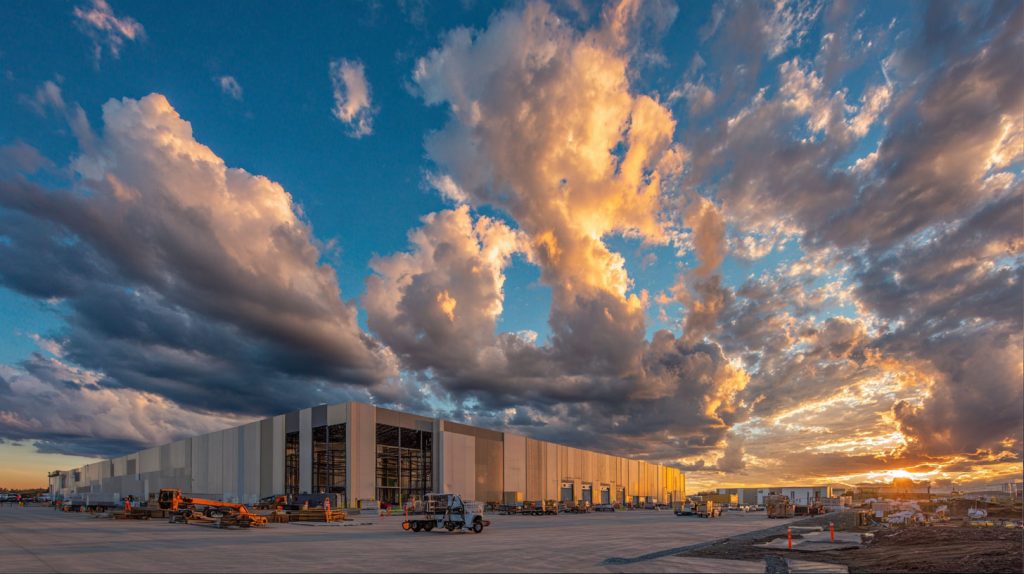
How AI and Automation Are Transforming Quality Assurance and Commissioning
In mission-critical data center construction, quality and reliability are non-negotiable. Every system—from electrical distribution to chilled water loops—must function flawlessly from day one. AI and automation are transforming the way superintendents manage Quality Assurance (QA) and commissioning (Cx) by introducing continuous monitoring, data-driven inspection, and predictive issue detection.
AI-powered QA tools use sensors, cameras, and machine learning to identify potential issues early, such as misaligned conduit runs, missing bolts, or insulation gaps. Instead of waiting for manual inspections, the system flags anomalies automatically, allowing field crews to address them immediately.
During commissioning, automated testing scripts verify that power, cooling, and redundancy systems meet performance specifications. AI analytics track results, ensuring the entire facility achieves required Tier certifications before handover. This proactive approach saves weeks of rework and reduces the risk of system failures post-turnover.
Top Benefits
- Detects quality issues automatically before they affect schedules.
- Reduces rework and improves commissioning accuracy.
- Provides digital documentation for compliance and owner transparency.
Best Practices
- Use AI cameras and sensors for continuous QA monitoring.
- Link automated test data to centralized commissioning dashboards.
- Involve QA and Cx teams early during installation to verify system readiness.
Q&A Mini Section
Q: How does AI help with commissioning?
A: It collects and analyzes performance data during testing, ensuring all systems meet operational standards.
Q: What’s the biggest benefit of automated QA?
A: Consistency—issues are identified early and verified with measurable data, not assumptions.
Q: Do owners benefit from AI QA systems?
A: Yes—they gain access to transparent, data-backed reports that prove quality and reliability.
By combining AI and automation, QA becomes predictive, not reactive—helping superintendents ensure every data center meets exacting performance standards.
StruxHub
Discover how StruxHub can revolutionize your construction management. Contact us today!
How Digital Twins and Real-Time Data Improve Project Control
One of the most powerful uses of AI in data center construction is the creation of digital twins—virtual models that mirror real-world progress in real time. These dynamic models integrate BIM data, IoT sensor inputs, and AI analytics to provide a live, 3D representation of the site’s operations.
Superintendents use digital twins to simulate installations, track progress, and verify field conditions without leaving the trailer. AI algorithms process data from drones, laser scans, and sensors to highlight deviations between design and as-built conditions. This makes it easier to catch layout errors early and validate installation accuracy.
Digital twins also support predictive decision-making. By combining schedule, cost, and logistics data, the model can forecast how changes in one area—like a delivery delay or labor shortage—will affect the overall timeline. This allows contractors to adjust strategies proactively and maintain control over the build.
Top Benefits
- Provides real-time visibility of progress, logistics, and quality.
- Detects discrepancies between design and field conditions.
- Enables predictive planning for schedule and cost management.
Best Practices
- Integrate BIM, IoT, and scheduling data into one AI-driven model.
- Use drones for frequent updates of large sites.
- Employ digital twin data during coordination and owner meetings.
Q&A Mini Section
Q: How does a digital twin differ from BIM?
A: BIM is static, while digital twins are live, continuously updated models linked to real-time data.
Q: Can digital twins predict schedule delays?
A: Yes—AI algorithms analyze activity patterns and resource usage to forecast potential slowdowns.
Q: How do owners use digital twins post-construction?
A: They serve as maintenance and operations models, helping monitor energy efficiency and asset performance.
Digital twins create a real-time feedback loop between the jobsite and the office, giving teams unparalleled control over performance and progress.
How Automation Is Advancing Safety and Workforce Efficiency
Automation isn’t just about speed—it’s also about safety and workforce empowerment. By automating high-risk and repetitive activities, contractors can reduce jobsite injuries while giving skilled workers the tools to perform with greater precision and less fatigue.
AI-enabled safety systems use cameras and sensors to monitor compliance in real time—detecting missing PPE, unsafe crane movements, or personnel entering restricted zones. Automated alerts notify supervisors instantly, allowing corrective action before incidents occur.
Meanwhile, automation supports productivity. Robotic equipment handles tasks like rebar tying, conduit routing, or precision welding with consistent accuracy, allowing crews to focus on installation quality and supervision. This shift not only improves safety but also helps address skilled labor shortages that continue to challenge the industry.
Top Benefits
- Prevents accidents by monitoring real-time safety conditions.
- Automates repetitive or dangerous tasks to protect workers.
- Improves workforce efficiency and project throughput.
Best Practices
- Deploy AI-based camera systems for safety zone monitoring.
- Use robotics to support repetitive mechanical and electrical work.
- Incorporate safety analytics into daily coordination meetings.
Q&A Mini Section
Q: How does AI detect unsafe behavior?
A: Through pattern recognition—AI identifies deviations from standard movement, PPE usage, or safe work practices.
Q: Can automation help reduce labor shortages?
A: Yes—by taking on repetitive tasks, automation allows skilled labor to focus on higher-value work.
Q: Is AI safety monitoring privacy-compliant?
A: Most modern systems anonymize data and focus on safety behavior, not personal identification.
AI and automation redefine safety from a reactive process into a proactive, intelligent system that continuously protects the workforce.
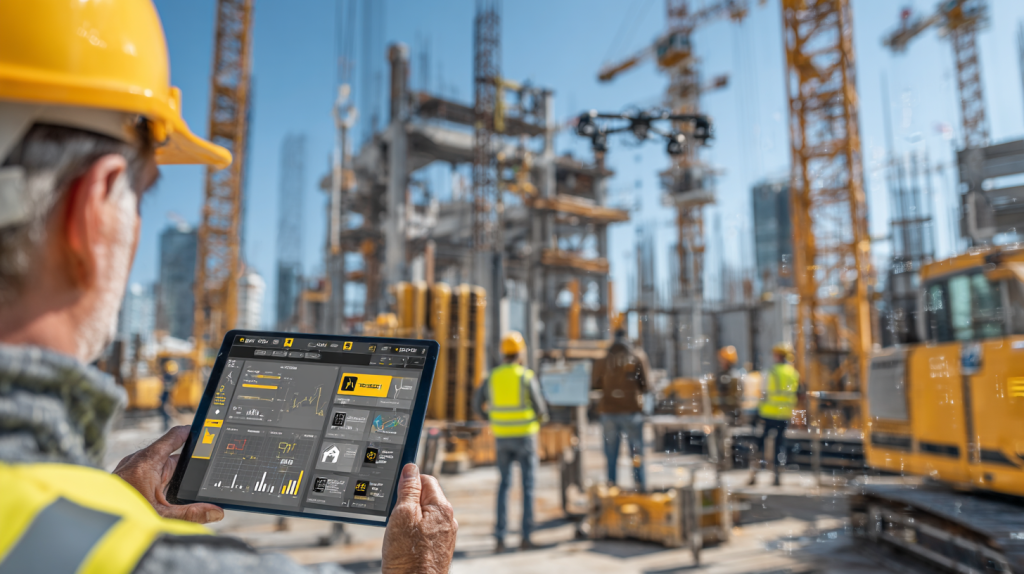
StruxHub
Experience the power of StruxHub today and witness firsthand how it can revolutionize your construction operations.
How StruxHub Uses AI and Automation to Improve Coordination on Mission-Critical Projects
As mission-critical data centers become more complex, StruxHub brings AI and automation together in a single platform designed for construction field coordination. It connects superintendents, trades, and suppliers in real time—ensuring every logistics, scheduling, and safety decision is backed by data.
StruxHub’s AI-driven scheduling engine predicts conflicts before they happen, automatically adjusting workflows to avoid downtime. Its delivery coordination tools use GPS tracking and predictive analytics to optimize gate bookings and material flow. Automated daily reports provide insights into progress, manpower, and site safety without manual data entry.
On the field side, StruxHub enables automation through mobile checklists, real-time updates, and QR-coded equipment logs. Superintendents can view live data from sensors or drones, compare it against the plan, and instantly communicate adjustments to teams.
This seamless integration of AI and automation gives data center projects the structure and foresight they demand. StruxHub eliminates the disconnect between planning and execution—helping contractors deliver hyperscale builds faster, safer, and with higher precision.
Top Benefits
- Centralizes AI-driven scheduling, logistics, and field data in one platform.
- Automates reporting and delivery coordination to save time.
- Enhances communication between superintendents, trades, and suppliers.
Best Practices
- Use StruxHub as a unified hub for daily coordination and logistics.
- Enable predictive scheduling alerts to anticipate delivery conflicts.
- Connect drone and sensor data for real-time visual validation.
Q&A Mini Section
Q: How does StruxHub’s AI support large-scale coordination?
A: It analyzes field data in real time to detect inefficiencies and automatically suggests adjustments.
Q: Can StruxHub integrate with BIM and QA systems?
A: Yes—it syncs with leading BIM and quality platforms to consolidate project data.
Q: What’s the biggest advantage for mission-critical builds?
A: Predictive visibility—superintendents always know what’s next, what’s delayed, and how to fix it instantly.
By blending automation and intelligence, StruxHub helps teams transform mission-critical project coordination from a reactive challenge into a proactive advantage.

FAQ
What are the biggest benefits of using AI and automation in mission-critical construction?
AI and automation are revolutionizing mission-critical construction by making projects faster, safer, and more predictable. On data center builds—where downtime is unacceptable—AI provides real-time analytics that allow superintendents and project managers to anticipate problems before they occur. It continuously analyzes schedule data, deliveries, and workforce performance to keep operations running smoothly.
Automation complements this by executing repetitive or precision-based tasks more efficiently than manual methods. For example, robotics can handle repetitive mechanical work like conduit bending or welding with consistent quality, while AI predicts when equipment or labor resources need to be adjusted. Together, they reduce costly downtime and human error.
These technologies also enhance communication and accountability. Instead of relying on manual reports, teams use AI-powered dashboards that show real-time progress and safety compliance. Data-driven decision-making replaces guesswork, leading to better outcomes and fewer change orders.
For mission-critical facilities—where power, cooling, and uptime are paramount—AI and automation provide a level of precision and control that traditional methods can’t match. They not only improve project performance but also help ensure long-term reliability once the facility goes live.
How is AI being used in scheduling and project planning for data centers?
AI has transformed construction scheduling from a static process into a dynamic, predictive one. In large data center builds, schedules involve thousands of interdependent tasks. AI-powered scheduling software analyzes these relationships in real time, adjusting automatically as new data—like weather, deliveries, or crew performance—comes in.
This predictive scheduling identifies risks early. For example, if a delivery is delayed or a crane is unavailable, the system forecasts downstream effects and recommends solutions such as shifting work sequences or reallocating manpower. Machine learning models improve over time, learning from previous projects to create even more accurate forecasts.
For superintendents, this means better foresight and less time spent firefighting. Instead of waiting for delays to occur, they can act proactively to maintain progress. AI scheduling also integrates with logistics and procurement systems, ensuring that materials, equipment, and labor are always synchronized.
Ultimately, AI makes construction planning adaptive. It helps teams maintain agility in complex environments—especially in mission-critical projects where even minor scheduling slips can impact handover dates and operational readiness.
How does automation improve quality and safety in mission-critical projects?
Automation plays a critical role in improving both quality and safety on hyperscale construction projects. Robotic systems and AI-assisted cameras monitor field activities with a level of precision and consistency that humans alone can’t achieve. Automated inspections use sensors and computer vision to detect defects—like misaligned ducts or missing fasteners—long before they cause performance issues.
Safety improves through continuous monitoring and early intervention. AI-powered safety systems can identify potential hazards, such as workers entering restricted zones or cranes operating too close to obstacles. Automated alerts are sent in real time, allowing supervisors to intervene immediately.
In addition, automation reduces the exposure of workers to dangerous environments. Robots handle heavy lifting, repetitive installation, and confined-space inspections, reducing fatigue and the likelihood of injury.
By combining automation with AI analytics, quality and safety become measurable, predictable, and continuously improving aspects of construction. The result is fewer incidents, higher accuracy, and better compliance—all essential for mission-critical data centers that must meet rigorous uptime and operational standards.
What challenges do contractors face when implementing AI and automation?
While AI and automation offer significant advantages, contractors often face challenges during adoption. The first is data readiness—AI systems rely on accurate, consistent input data. Many construction teams still operate with fragmented systems, making it difficult to consolidate reliable information for machine learning analysis.
Another challenge is training and cultural adaptation. Field teams may resist new technology if they don’t understand how it improves their workflow. To overcome this, companies must invest in hands-on training and demonstrate practical value early—showing how automation reduces rework, simplifies coordination, and enhances safety.
Cost and integration can also present hurdles. AI and automation require initial investment, and not all existing systems integrate easily. Choosing open, interoperable platforms is key to minimizing disruption and maximizing ROI.
Despite these challenges, early adopters consistently report major gains in productivity and predictability. As tools become more user-friendly and data collection more standardized, AI and automation are quickly evolving from optional upgrades into essential parts of mission-critical construction management.
How does StruxHub use AI and automation to simplify data center construction?
StruxHub brings the power of AI and automation into one intuitive platform designed for real-world construction teams. It centralizes scheduling, logistics, and field coordination, using AI analytics to predict issues before they occur. For superintendents and project managers, this means they can make decisions based on live data rather than outdated spreadsheets or guesswork.
StruxHub’s AI engine automatically adjusts schedules when deliveries change, detects conflicts between trades, and recommends adjustments to maintain project flow. Automation tools handle repetitive administrative tasks—like daily reporting, gate scheduling, and progress documentation—saving hours of manual work.
The platform also integrates with drones, IoT sensors, and BIM systems, enabling real-time visibility into site progress. Safety analytics monitor workforce activity and flag potential risks, while predictive dashboards forecast material needs and equipment usage.
By combining automation and intelligence, StruxHub simplifies mission-critical construction from planning to commissioning. It gives project teams predictive control over logistics, safety, and performance—helping them deliver data centers faster, safer, and with higher precision than ever before.
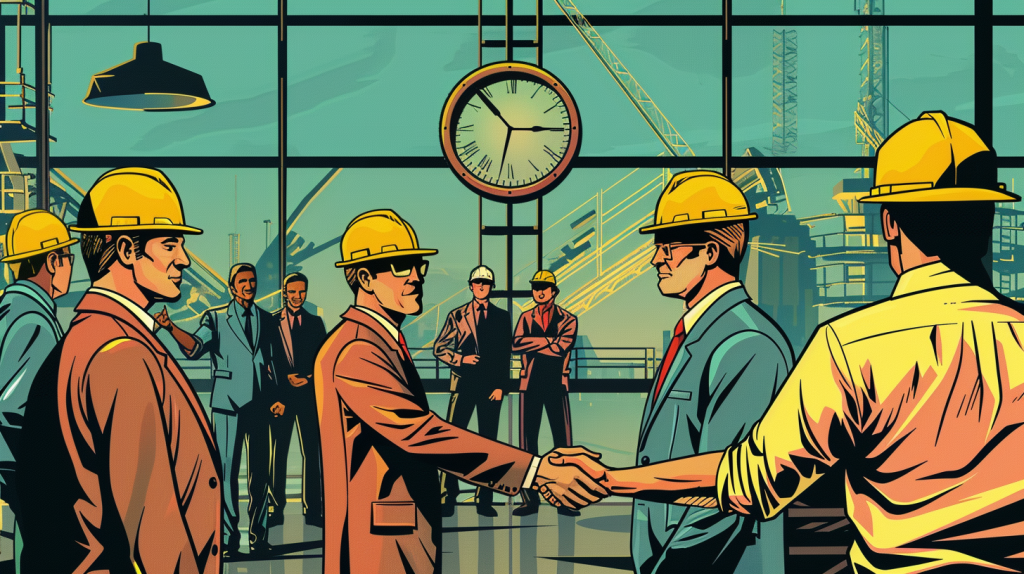
StruxHub
Discover how StruxHub can revolutionize your construction management. Contact us today!
Related Pillar Articles:
Best Guide to Construction Logistics Plans (CLPs): What Owners Want to See Before Work Starts
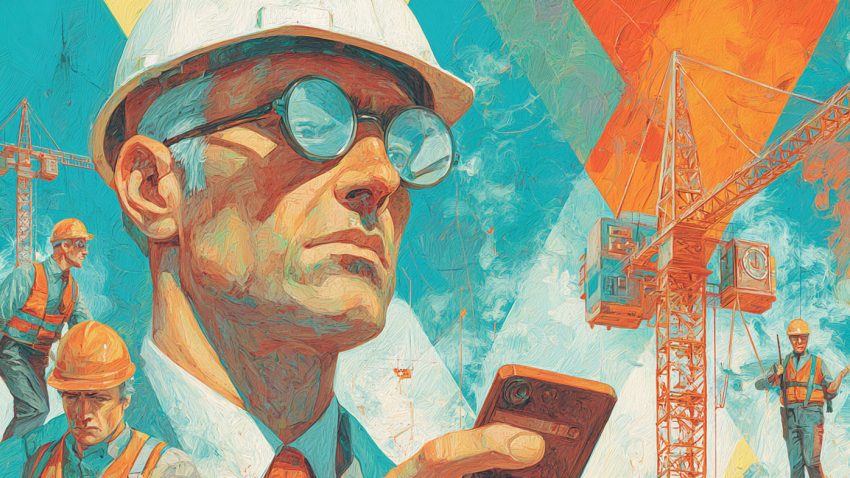 December 9, 2025
December 9, 2025
